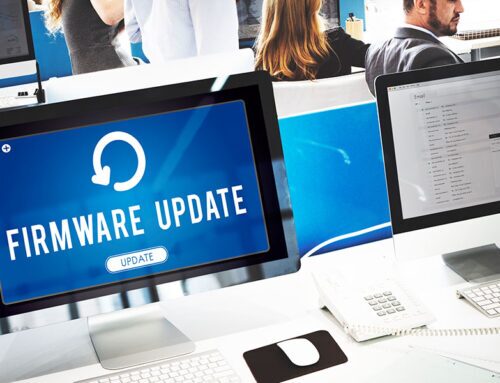 You’ve put in countless hours building your business to provide competitive value to your customers and crafting your brand to represent quality and dependability. Consumers who purchase your goods and services are satisfied with their experience and happy to provide you with referrals based on their positive interaction with your company. When everything runs as expected, your transactions are smooth and generate positive reviews for your efforts.
You’ve put in countless hours building your business to provide competitive value to your customers and crafting your brand to represent quality and dependability. Consumers who purchase your goods and services are satisfied with their experience and happy to provide you with referrals based on their positive interaction with your company. When everything runs as expected, your transactions are smooth and generate positive reviews for your efforts.
But what happens when there’s a hiccup in the process and extra assistance is required? A business can do everything right within its power and still end up with customers left frustrated by a technical glitch or misunderstanding that requires extra time and attention to address. When the customer contacts your company for help, how you handle this interaction can mean the difference between a loyal consumer who sings your praises and one who’s angry and frustrated, ready to tell the world the perceived incompetencies of your business.
Why Is Technical Support Important?
 Customer support can be one of the most difficult points of contact to navigate, but it can also arguably be considered the most important. When a customer calls tech support, it’s a sign something has broken in the chain of their experience with your company. This can be due to a mistake on the part of the user, an error by the business or the result of a random act of chance, but it’s likely the person calling is already unhappy with their experience. Since customer satisfaction is the cornerstone of any successful business venture, it’s vital they receive the help they need and leave the interaction feeling valued.
Customer support can be one of the most difficult points of contact to navigate, but it can also arguably be considered the most important. When a customer calls tech support, it’s a sign something has broken in the chain of their experience with your company. This can be due to a mistake on the part of the user, an error by the business or the result of a random act of chance, but it’s likely the person calling is already unhappy with their experience. Since customer satisfaction is the cornerstone of any successful business venture, it’s vital they receive the help they need and leave the interaction feeling valued.
Customers tend to form stronger memories of negative experiences than of positive ones. This means a negative initial impression can have a greater impact than those that follow the expected path. While this can be damaging for business when the customer can’t be satisfied, turning the interaction around and showing your company is willing to go the extra mile to improve their experience can leave the person with a lasting memory of receiving excellent service from your representatives. When their story is shared with people in their circle or on social media, it will end with a win for your business, creating positive organic marketing that shows your commitment to consumer satisfaction and possibly resulting in new customers. To get this result, however, there are a number of best practices your company needs to follow.
1. Require Minimal Effort to Seek Help
Before the customer even has the chance to speak with a representative from your company, they must find their contact options. The contact options available will depend on the systems your business has in place, but it should be easy for the customer to see what those options are. This means your preferred contact methods should be displayed prominently in multiple areas of your website, either directly or using links that point to a dedicated contact page. Your contact information should be accessible from the menu, the header and/or the footer.
Email addresses should be linked to open a new message from the customer’s preferred email provider, or a message form should be embedded directly on the page. Phone numbers should be linked to open a new phone call for mobile users, and the hours your support team is available must be prominently displayed. Chat assistance will also need availability hours posted. In addition, it’s important to note that offering multiple contact options can help irritated customers feel more comfortable with reaching out in their preferred manner.
2. Address Issues Promptly
Turning requests for help into a better customer experience requires a quick response or at least a clear expectation of when the problem will be resolved. If your business offers live IT support in the form of a customer service phone number or online chat, resolution times should be swift through these points of contact. Try to keep hold times to a minimum on the phone; the use of chatbots on your live chat support can help the customer feel heard until a live support agent is available to handle their request. Just be sure to avoid using chatbots to answer complex questions, and never lie to the customer to make them believe they’re talking to a real person.
If support tickets must be submitted through email, response automation offers the illusion of a quick reply, but the contents should include how long it will take for the customer to receive a message from a real person. Customer retention will depend on how quickly the company responds to the issue presented, so support tickets should always be handled in a reasonable time frame.
3. Provide Self-Service Help Options
Some issues can be resolved without the need for any personal interaction. Providing a knowledge base that helps customers navigate your website or company process will help prevent problems from occurring and offer a more positive experience. This can be purely text-based but could also benefit from posted webinars that walk customers through complex steps in detail. This should also include a section for frequently asked questions (FAQ) that offers troubleshooting advice for common or expected technical issues. People sometimes prefer to solve their issues on their own to save time or avoid personal interaction, so make sure you provide your customers with the appropriate tools to do so. This not only gives you the appearance of proactively trusting your consumer base to troubleshoot simple issues but also frees up your support staff to assist those who need additional help.
4. Invest in Your Support Team Members
The IT service members who interact with the public are the face of your company, so it’s vital they have the tools to make a positive first impression. There are several areas that should be considered when managing this important team.
- Provide quality training: People skills are an important aspect in any customer service position, but they’re critical when communicating with customers about technical issues. IT solutions can be complex and difficult to explain. When the recipient is already frustrated, approaching the problem insensitively can provoke a strong negative reaction. IT support staff must be trained to actively listen, acknowledge the problem and de-escalate the situation when needed.
- Emphasize accountability: The customer’s first point of contact should always provide the solution to their problem. Even if an issue is presented that can’t be resolved directly by the team member who answered, they should work to find a solution to present to the customer or remain in contact until the correct person for the job is located and the problem explained. Customers should never be volleyed through multiple transfers to repeatedly explain their issue. Create a customer service culture that celebrates the expectation of consumers receiving solutions from the support member who first responded.
- Equip your support team with the right tools: If your support department has received adequate training, those who interact directly with the customer should be empowered to offer solutions. IT issues and instructions can be difficult to explain, so remote assistive tools, such as screen sharing applications, can greatly simplify this process. If perks can be offered for customer retention purposes, give your frontline workers the power to offer them and trust their judgment regarding which scenarios warrant this type of action.
- Set clear expectations about the customer experience: Make sure your team fully understands the experience you want to create for your customers. Create a comprehensive document that outlines the goals for every interaction and distribute it to every IT support team member who will have direct contact with customers. Experiences between different staff members should be consistent on the customer’s end.
5. Use Consumer Data Efficiently
The less time a customer must remain in a support interaction to achieve resolution, the more positively they’ll view the experience. Harvesting and maintaining customer information can be incredibly helpful to the support staff responsible for handling technical questions. If the customer has an online account that includes an identifying element, such as a phone number or email address, support staff can look up the person’s information to personalize the interaction. Addressing the customer by name can help them feel valued, and having relevant technical information on file, like the hardware or software used, reduces the number of questions that must be asked to clearly understand the problem. Support requests that require multiple follow-ups or referrals to different support members can be streamlined by including detailed notes, eliminating the need for the customer to repeat their problem at each point of contact.
6. Engage on Social Media
Younger generations tend to use social media as a preferred method of contact with the companies they patronize, but this trend is also becoming more popular among older consumers. This is especially true for customers who’ve already attempted to resolve their issue through the suggested channels and feel the company has failed to meet the expected level of effort to fix the problem. Companies with active and engaging social media accounts provide an additional avenue to voice concerns when traditional support efforts have failed. Due to the public nature of social media interactions, it’s imperative your social media manager or team receives the same level of training offered to your company support desk.
7. Measure Support Efforts
Every situation that involves direct interaction between a company representative and the consumer should be evaluated for possible improvement, and IT support is no exception. Set your key performance indicators (KPIs) and metrics to provide measurable data to track what will show the success or failure of your tech support efforts. These data sets should help you reduce costs, improve the consumer experience and improve the performance of IT support staff. Some examples of measurable elements include the number of closed support tickets, the average number of hours to resolve an equipment failure or the average number of hours it takes to close out a support ticket. Tracking this data can give you insight into the support team’s strengths and weaknesses. Information can also be pulled from reports generated by your CRM system, website analytics and social media accounts.
8. Evaluate the Data and Make Adjustments
Once you’ve gathered data from all your measurables over a set time period, analyze it for relevant trends. Identify possible problem areas and implement changes to improve them. For example, lengthy support ticket closure could stem from a number of factors, such as poor IT support training, ineffective management or the need for better resources to aid your help desk. Once you’ve implemented the needed changes, take the measurements again to determine the impact. This process should be repeated on a regular basis to ensure your customers’ interactions continue to improve. As technology evolves, the response to IT support requests must continue to meet the needs of your customers in a meaningful way.
Customers who call tech support may initially appear to be an unavoidable nuisance, but these communications are actually excellent opportunities to impress the customer and identify trouble areas within your systems. To ensure a positive outcome from these interactions, a number of best practices can be implemented that make consumers feel valued and provide the solutions they need. When used correctly, the customer is more likely to have their initial negative experience transformed, creating a greater chance of free marketing for your business within their sphere of influence. Responding quickly to the customer’s preferred method of contact, offering a variety of options, investing in your support staff and regularly collecting and analyzing the associated measurable data can help you determine the impact of your support desk efforts and identify new ways to improve.
About the Author: EIRE Systems
EIRE Systems is a leading independent provider of professional IT, AV and Access Security services to the financial, insurance, manufacturing, health care, retail, construction, hospitality, commercial real estate, legal, educational and multinational sectors in Japan and throughout the Asia Pacific region. EIRE Systems has expertise across a wide spectrum of Information Technologies, with a track record for successfully completing hundreds of assignments since its establishment in 1996.



